15 Interesting & Fun Mallard Duck Facts You Never Knew!
Last Updated on
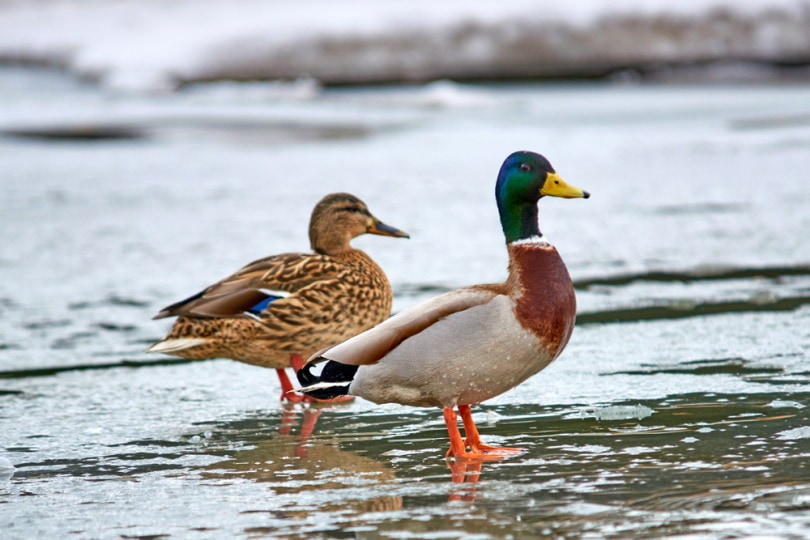
Ducks can be fun to watch as they fly overhead or go about their business in streams and ponds. They signify the coming of winter when we see them fly south, and we know that it’s spring when they come back. The Mallard is one of the most common varieties of ducks in the United States, and if you are hoping to learn more about them, you’ve come to the right place. Here are several interesting and fun facts that will help you understand these animals better.

The 15 Mallard Duck Facts
1. The Male & Female Mallard Look Different

One of the first things that you need to know about Mallard ducks is that the males and females look quite different. The male has iridescent green feathers on his head, making him instantly recognizable. He also has a thin white collar on the neck and a dark brown breast. Females have the same body style but have much plainer coloring, featuring mottled brown and tan plumage.
2. The Male & Female Mallard Sound Different
The male and female Mallard sound different from each other. The female produces the traditional quacking sounds that you expect from a duck, with two to 10 quacks that start loud and long and get shorter and softer. The male Mallard does not quack and produces a raspy sound instead. He also likes to make rattling sounds by rubbing his bill against his flight feathers.
3. The Mallard Duck Is Highly Adaptable
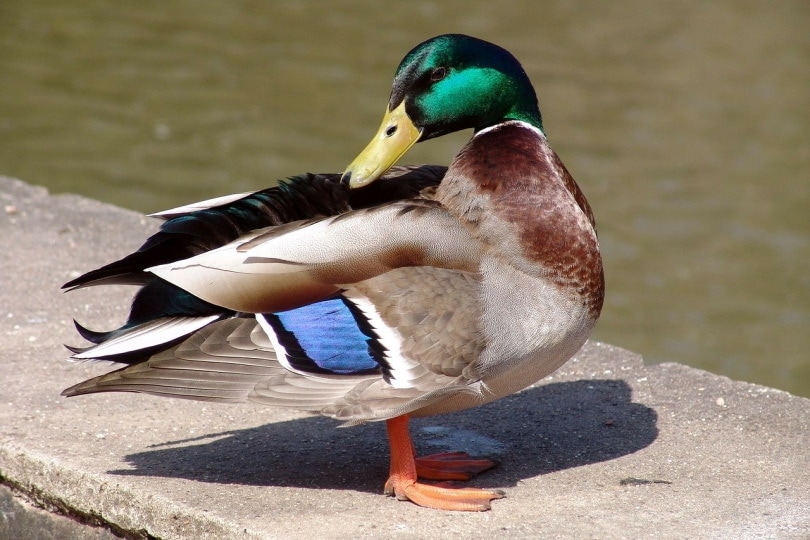
One of the reasons that the Mallard duck is so common in the United States and other countries is that it can adapt to living in almost any environment as long as there’s plenty of water. The water doesn’t even need to come from a pond or river. Artificial habitats, like swimming pools or fountains, will work just as well.
4. The Mallard Is an Ancestor to Domestic Ducks
The Mallard is one of only two wild ducks that humans have learned to domesticate, and most modern domestic varieties are descendants of it. Selectively breeding these domestic birds helps breeders create traits that they desire, like higher egg production or thicker plumage. The other wild duck that has been domesticated is the Muscovy, but it’s not as popular as the Mallard.
5. The Mallard Duck Dabbles for Food
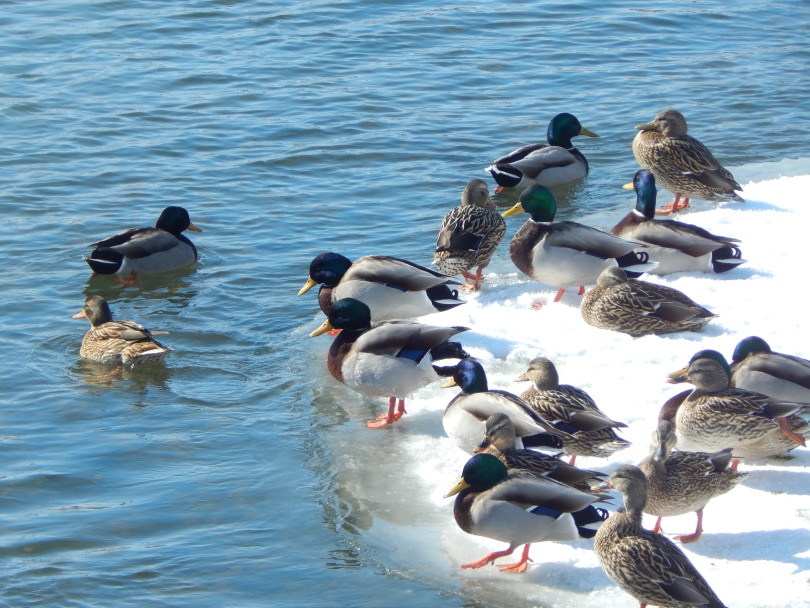
Dabbling is a way that many ducks get their food. The duck floats on the water and tips forward to put its head underwater while its tail feathers remain above the surface. This position enables it to graze on underwater plants and eat worms, snails, and insects. Dabbling keeps ducks’ feathers dry so they can get into the air quickly if necessary. Other kinds of ducks will dive completely under the water to get their food.
6. The Mallard Often Grazes on Land While Migrating
A Mallard duck will forage on land for seed and grain at any time of the year, but it’s especially common during migration because food is often scarce. Many people will find that Mallards are willing to take bread and other human foods from them, but too much can be harmful to their health.
7. The Mallard Duck Is Quite Promiscuous
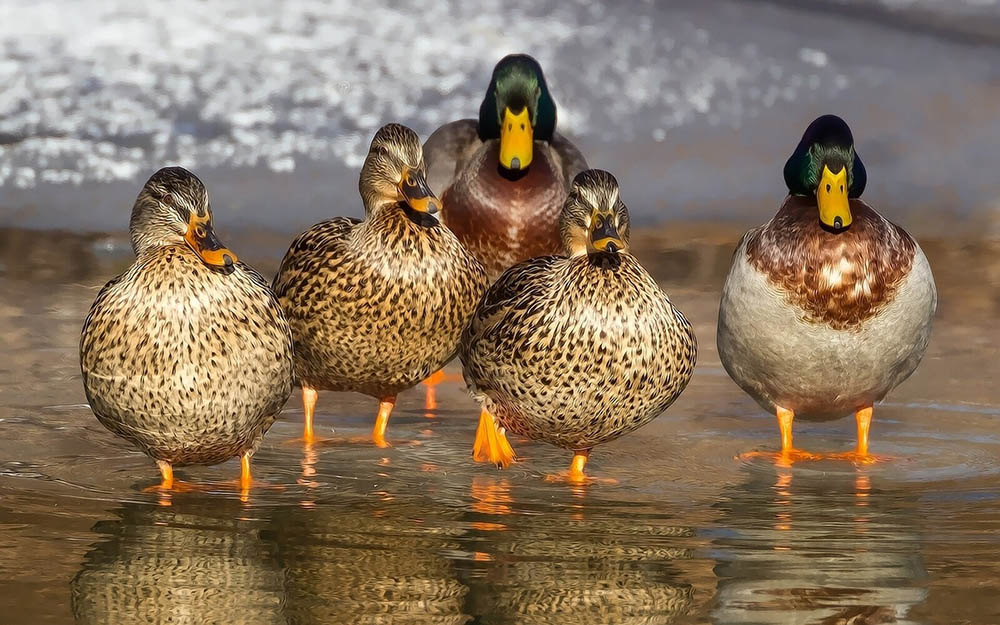
Since the Mallard duck has a huge range, covering the entire United States and other countries, it frequently encounters other duck species and is more than happy to mate with them. This behavior can easily produce hybrids of the two species. The Mallard X American Black Duck and Mallard X Northern Pintail are two examples of naturally occurring hybrids.
8. The Mallard Is Mostly Monogamous
The Mallard tends to pair up with a mate in the fall, and they will stay together for the winter. They will breed in early spring and generally stay monogamous once paired. That said, if the paired male spends too much time away from the nest, an unpaired male may intrude and copulate with the paired female.
9. The Mallard Duck Flies Fast

Scientists have clocked migrating Mallard ducks traveling at speeds reaching 55 mph, which is faster than many other water birds.
10. The Mallard Has the Ability to Fly Quite High
In 1962, a commercial airliner struck a Mallard flying at 21,000 feet, which was the highest air collision on record until 1973, when an aircraft struck a vulture at 37,000 feet. While the Mallard can fly quite high, these ducks tend to stay below 10,000 feet while migrating.
11. A Mallard Can Live a Long Time
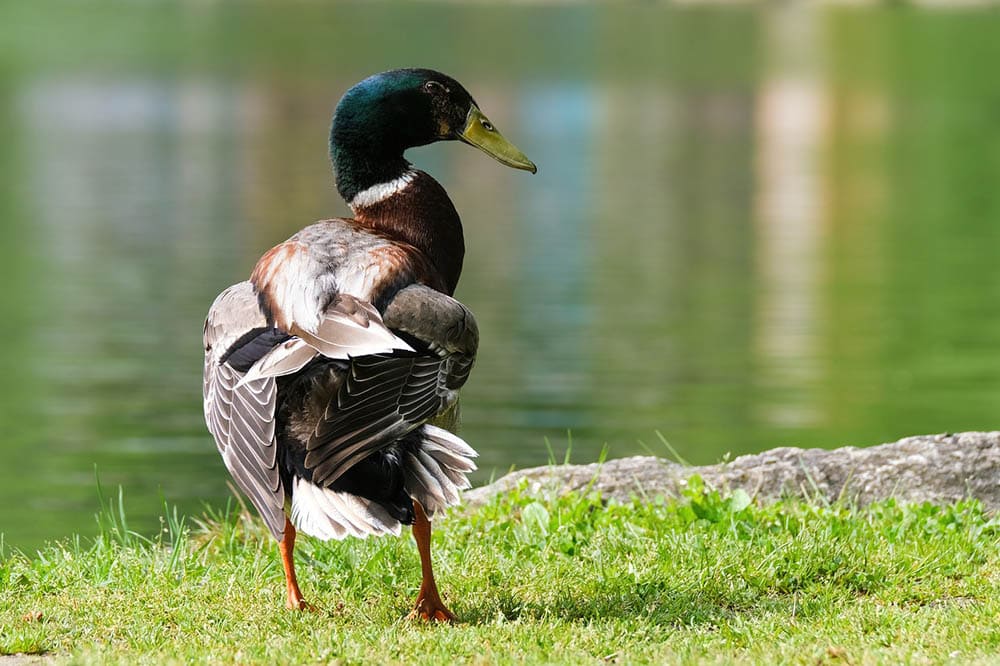
Most Mallard ducks tend to live 3 to 5 years, but some can live longer. In one case, a Mallard shot by a hunter in 2008 had a tag on its leg that a biologist had placed there in 1981, making the bird more than 27 years old. Who knows how long this bird would have lived had it not encountered the hunter or how many other birds live this long?
12. We’ve Known About the Mallard for a Long Time
The first known description of a Mallard duck is by Carl Linnaeus, whom many consider to be the father of taxonomy. He wrote about the bird in 1758 and created a name for it that was a combination of a Latin word meaning “duck” and a Greek term for “broad-billed.”
13. Mallard Ducks Have a Strong Population
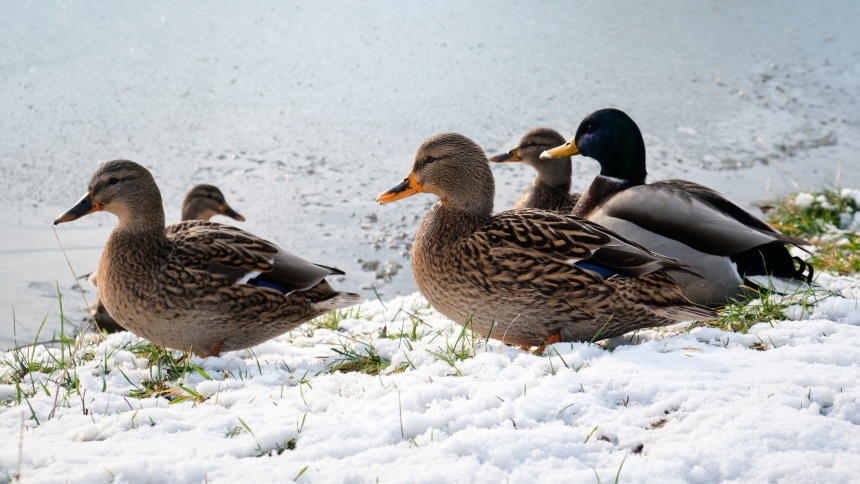
The Mallard is highly adaptable, so its population hasn’t suffered as much as some other animals due to habitat loss and environmental change. Currently, there are more than 11 million of these ducks in the United States alone.
14. The Mallard Is One of the Most Hunted Game Birds
Since the Mallard is so common, it’s often the target of hunters. In fact, some reports suggest that one out of three ducks shot in the United States is a Mallard.
15. Mallards in City Parks Can Be Quite Friendly
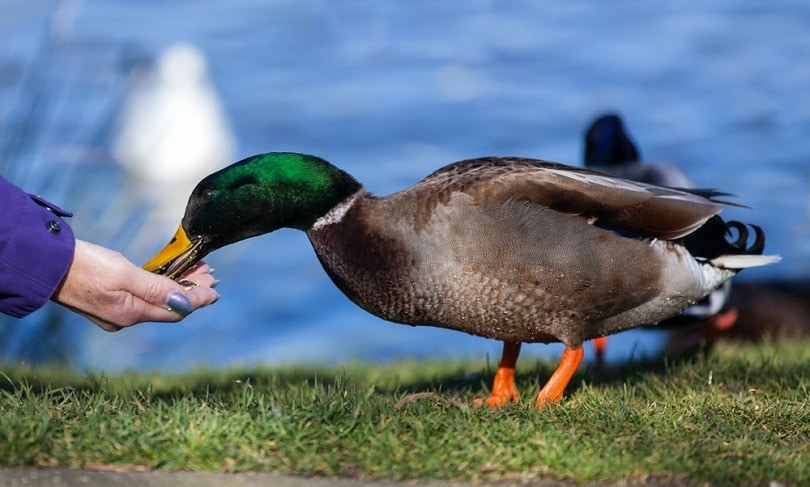
The Mallards that you see at parks can become quite friendly with humans, who are often good food sources for the ducks. Once they are accustomed to receiving handouts, they will be comfortable coming close to you — when they think that you have something for them.

Conclusion
Mallard ducks are attractive and friendly birds that won’t take much work to find. They are common across America and frequent large parks and waterways. You may even find them in your swimming pool from time to time. They are extremely adaptable and can make a home almost anywhere, but they are also popular game birds, and hunting them can reduce their numbers too much if we’re not careful.
Featured Image Credit: Yerbolat Shadrakhov, Shutterstock
Table of Contents
- The 15 Mallard Duck Facts
- 1. The Male & Female Mallard Look Different
- 2. The Male & Female Mallard Sound Different
- 3. The Mallard Duck Is Highly Adaptable
- 4. The Mallard Is an Ancestor to Domestic Ducks
- 5. The Mallard Duck Dabbles for Food
- 6. The Mallard Often Grazes on Land While Migrating
- 7. The Mallard Duck Is Quite Promiscuous
- 8. The Mallard Is Mostly Monogamous
- 9. The Mallard Duck Flies Fast
- 10. The Mallard Has the Ability to Fly Quite High
- 11. A Mallard Can Live a Long Time
- 12. We’ve Known About the Mallard for a Long Time
- 13. Mallard Ducks Have a Strong Population
- 14. The Mallard Is One of the Most Hunted Game Birds
- 15. Mallards in City Parks Can Be Quite Friendly
- Conclusion
About the Author Ed Malaker
Ed Malaker is a veteran writer who contributes to a wide range of blogs covering information on computer programming, pets, birding, tools, fitness, guitars, and optics. Outside of writing, Ed is often found working in the garden or performing DIY projects in the house. Ed is also a musician, spending his time composing music for independent films or helping people repair their guitars.
Related Articles:
10 Types of Hummingbirds in Arkansas (With Pictures)
8 Types of Hummingbirds in Nebraska (With Pictures)
5 Types of Hummingbirds in Idaho (With Pictures)
3 Types of Hummingbirds in Mississippi (With Pictures)
8 Types of Hummingbirds in Kansas (With Pictures)
5 Types of Hummingbirds in West Virginia (With Pictures)
5 Types of Hummingbirds in Ohio (With Pictures)
Where Do Nuthatches Nest? Nuthatch Nesting Habits Explained
